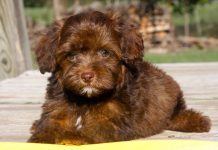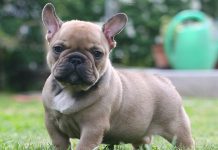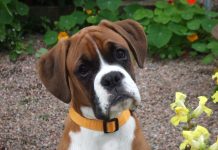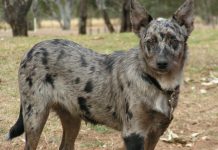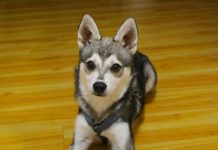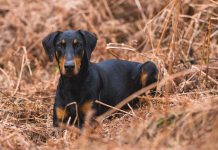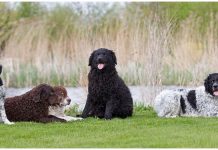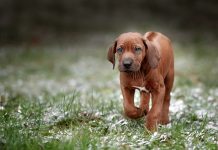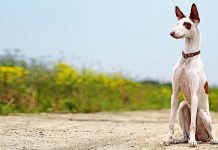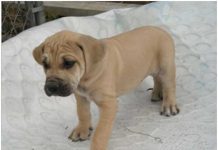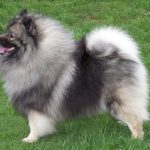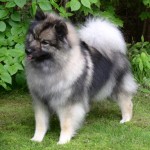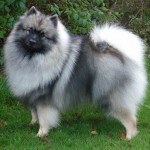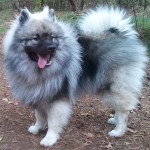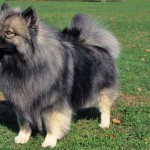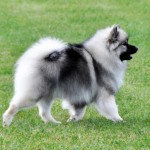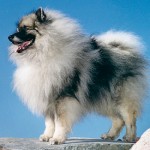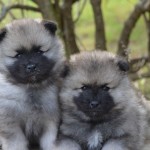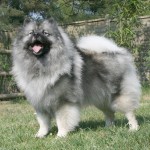The keeshond is among the few dogs that were specifically bred to function both as a guard dog, watchdog and family companion. These dogs have a loving and gentle nature and are devotional to their owners. This is attributed to the fact that they were certainly not bred to hunt, chase, kill or attack people or other animals. Keeshonds are sturdy, medium-sized canines that have stunning furry gray coats and compactly curled tails.
These canines love the outdoors, but they also enjoy the indoors. These dogs are friendly, lively, smart, cuddly, and extroverted. They interact very well with children and make an affectionate and lovable family companion. Keeshonds were accepted into The American Kennel Club in 1930.
History and Health :
- History :
The Keeshond originated in Holland. It is a descendant of the same dogs that contributed to the Norwegian Elkhound, Samoyed, Finnish Spitz, Siberian Husky, Pomeranian and Chow. Its ancestors are believed to have come to Europe many centuries ago, with the far North travelers. These dogs were preferred by farmers in 1400s and 1500s because of their guarding and innate watchdog capabilities, their protectiveness of kids and their gentle playfulness.
These dogs were used for many purposes in the 17th and 18th centuries on European barges, farms and even river boats. In the 20th century, some women and men had a great interest in this breed of dogs and they are the ones who brought them to the British, American and European dog fanciers.
- Health :
Generally, Keeshonds tend to be healthy. However, they are prone to specific health conditions just like other dog breeds. Nevertheless, not all dogs will get all or any of these illnesses. Health predispositions for this breed include generalized keratoacanthoma, primary hyperparathyroidism, epilepsy, diabetes mellitus, hypothyroidism, patellar luxation, nasal cavity carcinoma, cataracts, glaucoma, Ehler-Danos syndrome, patent ductus arteriosus, hip dysplasia, hyperadrenocorticism and adult-onset growth-hormone-responsive dermatosis.
Temperament & Personality :
- Personality :
These canines are friendly, lively and outgoing with other dogs and people. Their temperament is obedient, bright, agile, quick, playful and sturdy. These dogs are intelligent, smart, affectionate and alert animals. They are cuddly and sociable and are very fond of children. Keeshonds love spending time with their family members and love participating in all the family activities.
- Activity Requirements :
Keeshonds are strong dogs that love accompanying the family to all outings. They love going for long leisure walks along the beaches, parks or the neighborhood. They are adventurous, playful and love trying out new activities. They do not need too much workout and will be healthy with minor regular activities and walks.
- Trainability :
These dogs are quick learners. However, they tend to be self-directed and independent sometimes, and this can make training quite challenging. They require repetition and patience when training. The dogs should be socialized early to enable them to grow into stable, self-confident and well-adjusted adults.
- Behavioral Traits :
Keeshonds can be a little barky, due to their watchdog ancestry. They are also shrewd and agile
Appearance & Grooming :
- Appearance :
The keeshond has an attractive facial expression that resembles that of a fox. They appear to be naturally handsome dogs with bodies that are well-balanced. They have pointed muzzles and small, furry pricked ears and have a coat that is thick and wolfish.
- Size and Weight :
Fully matured keeshonds tend to stand at a height of 18 inches for male and 17 inches for the females. In addition, they have an average weight of 35 to 45 pounds.
- Coat & Color :
The keeshond’s coat tends to be elongated around the neck, chest and shoulders, and it forms a lion-like mane and this noticeable in males. Their hind-legs have thick coats. The keeshonds come in a variety of colors such as gray, black and cream or a blend of these colors. Some canines tend to be shadier than others are.
- Grooming :
Keeshonds are not high-maintenance canines irrespective of their dense coats. They should be brushed several times every week so that they can continue shedding. These dogs are relatively clean and have minimal doggie odor. They should be bathed after every three months. Their teeth should be brushed two to three times every week to eliminate bacteria and tartar buildup.
Daily brushing is better as it prevents bad breath and gum disease. You should check the ears every week for bad odor or redness, which is a sign of infection. The ears should be wiped with a cotton ball dipped in a mild ear cleaning solution to prevent infections. Their nails should also be trimmed once every month.
- Body Type :
The keeshond has a compact body with a short, straight back. It has a strong, deep chest, well-rounded barrel and a moderately tucked belly.
Characteristics :
- They are very friendly with kids
- They are very friendly to cats
- They are friendly to other dogs
- They are very easy to train
- They have excellent shedding
- They are the best watchdogs
- They are moderately intelligent
- They groom very well
- They are not very popular, in 2012; they were rated number 101 in popularity.
- They excellently adapt to new environments
Tasty Tidbits :
They can comfortably live in small spaces; hence, they are suitable for apartment houses, boats or even homes that have large yards. Keeshonds are companion breeds, therefore; they need to live in a family house and should be allowed to share almost all aspects of the owners’ lives. They become bored if they are not attended to for hours, with little contact with the family and his natural tendency to bark will increase.
Care :
Keeshonds do not require lots of exercises. However, they should be taken for a vigorous walk at least once every day. Keeshonds hate hot climates. Therefore, they should be kept in cool weather, as they are most comfortable in such climate. Therefore, they should be kept near fans or in an air-conditioned room during hot weather.
Images,Pics, Photos and Pictures of Keeshond :
Feeding :
The food that the keeshond eats depends on its age, metabolism, activity level, build and size. The recommended amount of food is one to two cups of high-grade food every day, and this should be divided into two. The keeshond should be kept in excellent shape by feeding him/her twice every day rather than giving him food all the time.
Information and Facts of Keeshond :
- Its full name is Keeshond
- Its other names are Smiling Dutchman, Dutch Barge Dog, Kees, Wolfsspitz, Chien Loup, Deutscher Wolfsspitz and German Spitz.
- It originated from Holland.
- It is a small breed dog.
- Their breed group is Non-sporting.
- It lives for 13 to 15 years.
- It has a height of 17 to 18 inches.
- It weighs 35 to 45 pounds.
- It is available in different colors; Silver, Black, Grey, Black & Silver, Grey & Black, Grey Cream & Black.
- The puppy Price ranges from $900 to $1100 USD.
- It sleeps for not more than 14 hours a day.
- It has a lower classification
Also Read: McDonald's Positions Available: Learn How to Apply



